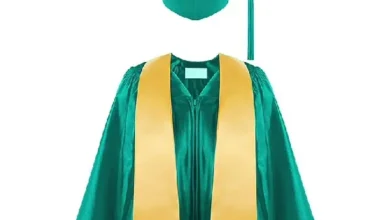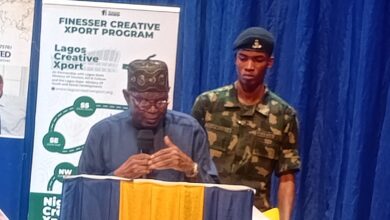Iran receives 40 J-10C fighter jets from China, declares skies no longer vulnerable
*Warns enemies of Republic to keep off as it's now fully prepared to defend itself against external aggressions

With Agencies
“Our skies are no longer vulnerable,” declared Brigadier General Hamid Vahedi, commander of the Islamic Republic of Iran Air Force (IRIAF). “With the arrival of these jets, we send a clear message: Iran is ready to defend its sovereignty and respond decisively to any aggression.”
The Islamic Republic of Iran says it has taken delivery of 40 advanced Chinese J-10C fighter jets, signaling a strategic shift in its air force capabilities and escalating concerns about a potential new arms race in the Middle East.

The development is said to be a dramatic show of military realignment and defiance, as China now looks like a more workable development partner amidst needs for an effective checker to arrogant infractions of international laws that Israel backed by the United States of America with some other western power including Germany perpetrate in the Middle East region.
The J-10C fighter jets acquisition, which Tehran confirmed through state media early Tuesday July 1, marks Iran’s most significant airpower upgrade in decades.
Iranian military officials say the move comes after prolonged delays in Russia’s promised Su-35 deliveries, prompting a pivot to Beijing for more immediate defense solutions.
“Our skies are no longer vulnerable,” declared Brigadier General Hamid Vahedi, commander of the Islamic Republic of Iran Air Force (IRIAF). “With the arrival of these jets, we send a clear message: Iran is ready to defend its sovereignty and respond decisively to any aggression.”
The deal with China represents a turning point in Iran’s procurement strategy. For years, Tehran had been negotiating with Russia for the advanced Su-35 fighter jets, originally intended as part of a post-embargo upgrade plan following the 2020 expiration of UN arms restrictions.
But repeated delays attributed to Russia’s own war in Ukraine and internal production constraints left Tehran increasingly frustrated.
Defense insiders say Iran began quietly negotiating with China in late 2024, culminating in the rapid delivery of 40 Chengdu J-10C multirole fighters over the past month.
The J-10C, known for its active electronically scanned array (AESA) radar, long-range precision strike capability, and modern electronic warfare systems, is considered a formidable platform comparable in some respects to Western fourth-generation-plus fighters.
Iran’s announcement comes amid heightened tensions following a series of airstrikes attributed to the U.S. and Israel in recent months, including the targeted destruction of radar sites and missile depots inside Syria and western Iran.
Tehran claims the new jets will restore “strategic equilibrium” and prevent further violations of its airspace.
“Let our enemies be warned,” General Vahedi said during a televised ceremony showcasing the new aircraft, adding that, “The Islamic Republic does not seek war but we are fully ready for it.”
Officials from the Israeli Defense Forces (IDF) and the Pentagon declined to comment directly on the development. However, senior regional analysts have voiced concern that the new fleet could embolden Iran’s military posture in contested zones such as the Persian Gulf, Iraq, and Syria.
China’s role quiet yet strategic partnership
China has not issued a formal statement on the jet delivery, but the move highlights growing military cooperation between Beijing and Tehran, both of which are signatories to a 25-year comprehensive strategic partnership signed in 2021.
This latest deal may mark China’s most overt arms transfer to Iran in over a decade, sidestepping Western scrutiny by exploiting the expiration of UN arms restrictions and expanding its foothold in the Gulf region.
Implications
With the balance of airpower shifting, regional rivals are already recalculating.
Saudi Arabia and the United Arab Emirates, both longtime U.S. allies, have invested heavily in fifth-generation platforms such as the F-35 and Eurofighter Typhoon.
Yet Iran’s acquisition of the J-10C narrows the qualitative gap and could trigger further military spending across the region.
Next move
While Iran’s air force remains relatively limited compared to NATO-aligned powers, the addition of 40 modern fighter jets marks a leap in capability and ambition.
Military observers are now watching closely to see whether Iran begins conducting joint exercises with China or leverages the aircraft for power projection in flashpoints such as the Strait of Hormuz.
Tehran has not disclosed the financial terms of the deal, nor has it commented on training or logistical support arrangements.
However, sources close to the Iranian military say Chinese advisors have been seen at multiple IRIAF bases in recent weeks.









